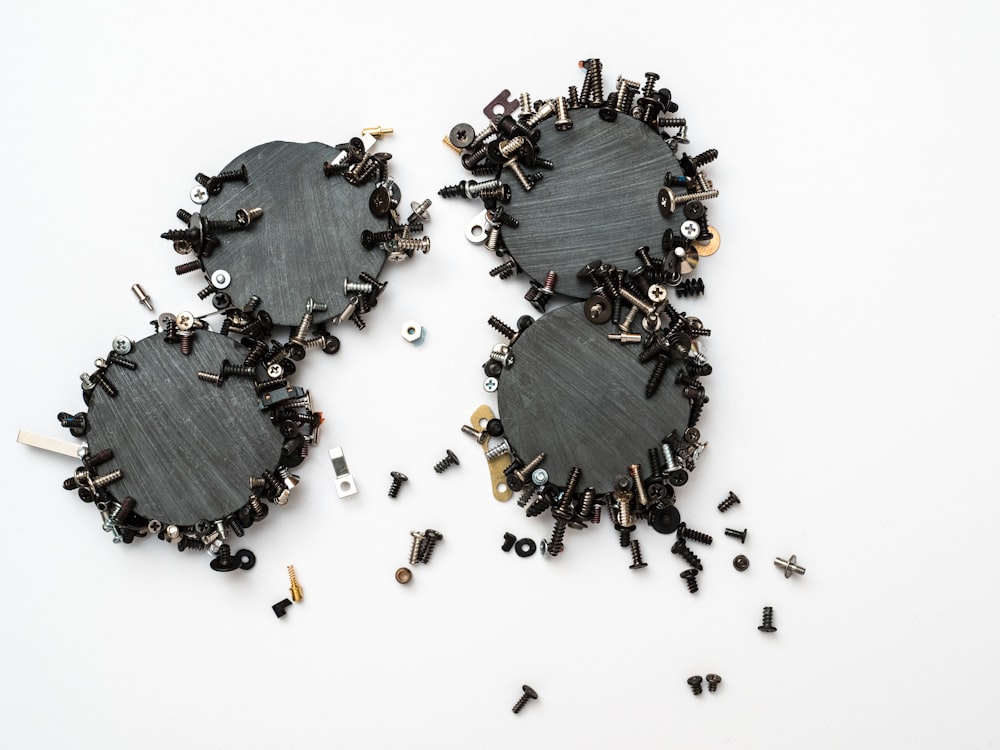repair
Fixing a Persistent Kitchen Sink Leak Expert Solutions
Identifying the Culprit: Understanding Your Leaky Kitchen Sink
When it comes to household nuisances, few things are as aggravating as a leaky kitchen sink. The constant drip-drip-drip can drive even the most patient person to the brink of insanity. But fear not, for there are solutions to this common problem that don’t involve calling in a pricey plumber. Let’s delve into the heart of the matter and explore how to put an end to that persistent leak once and for all.
Assessing the Damage: Determining the Source of the Leak
The first step in addressing a leaky kitchen sink is to identify where exactly the leak is coming from. Is it emanating from the faucet itself, or is the issue lurking deeper within the pipes? Take a moment to carefully inspect the area under your sink for any visible signs of moisture or dripping water. This will provide valuable clues as to the origin of the leak and help you formulate a plan of action.
Tackling Faucet Leaks: Simple Solutions for a Common Problem
If the leak seems to be originating from the faucet, don’t panic. Oftentimes, this type of leak can be remedied with a few basic tools and a little know-how. Start by turning off the water supply to the faucet and then disassembling the fixture to inspect the various components for wear and tear. In many cases, a worn-out washer or O-ring is to blame for the leak and can be easily replaced with a trip to your local hardware store.
Addressing Pipe Leaks: Dealing with a More Complex Issue
If the leak appears to be stemming from the pipes beneath your sink, you may be dealing with a more complex problem that requires a bit more finesse to fix. Begin by tightening any loose fittings or connections and inspecting the pipes for signs of corrosion or damage. If you spot any cracks or holes, you’ll need to replace the affected section of pipe using a pipe cutter and some replacement piping.
DIY vs. Professional Help: Knowing When to Call in the Experts
While many kitchen sink leaks can be successfully remedied with some DIY know-how, there are instances where it’s best to leave the job to the professionals. If you’re uncomfortable working with plumbing or if the leak is particularly severe, don’t hesitate to reach out to a licensed plumber for assistance. While it may cost you a bit more upfront, hiring a professional can save you time, frustration, and potentially costly repairs down the line.
Preventative Measures: Avoiding Future Leaks
Once you’ve successfully addressed the leak in your kitchen sink, it’s important to take steps to prevent future leaks from occurring. Regularly inspect the area under your sink for any signs of moisture or damage, and promptly address any issues you encounter. Additionally, consider investing in a leak detection system or adding a drip tray beneath your sink to catch any minor leaks before they have a chance to cause significant damage.
Conclusion: Putting an
Upgrade Your Bathroom Tub Drain Replacement Made Easy
Upgrade Your Bathroom with Tub Drain Replacement
Introduction
Is your bathtub drain causing you constant headaches? Are you tired of dealing with clogs and slow draining water? It might be time to consider a tub drain replacement. In this article, we’ll explore the various options available for upgrading your bathroom with a new tub drain.
Why Tub Drain Replacement Matters
The tub drain might seem like a minor component of your bathroom, but it plays a crucial role in maintaining proper drainage and preventing water damage. Over time, tub drains can become clogged with hair, soap scum, and other debris, leading to slow draining water and unpleasant odors. By replacing the tub drain, you can ensure efficient drainage and improve the overall functionality of your bathtub.
Understanding the Replacement Process
Many homeowners are hesitant to tackle tub drain replacement themselves, fearing it will be a complicated and messy process. However, with the right tools and knowledge, replacing a tub drain can be a relatively straightforward task. The first step is to identify the type of tub drain you have – whether it’s a toe-touch, lift-and-turn, or push-pull style drain – as this will determine the replacement method.
DIY vs. Professional Replacement
While some homeowners may prefer to tackle tub drain replacement as a DIY project, others may prefer to enlist the help of a professional plumber. DIY replacement can be cost-effective and satisfying for those with basic plumbing skills, but it’s important to proceed with caution to avoid damaging the bathtub or causing leaks. For more complex installations or if you’re unsure of your abilities, hiring a professional plumber is recommended to ensure the job is done safely and correctly.
Choosing the Right Replacement Drain
When selecting a replacement tub drain, there are several factors to consider, including the material, style, and compatibility with your existing plumbing. Stainless steel and brass are popular choices for tub drains due to their durability and resistance to corrosion. Additionally, consider whether you prefer a traditional or modern style drain to complement your bathroom décor.
Ensuring Proper Installation
Whether you’re tackling tub drain replacement yourself or hiring a professional, proper installation is essential to ensure the drain functions correctly and prevents leaks. Begin by removing the old drain using a drain removal tool or pliers, taking care not to damage the surrounding bathtub. Clean the area thoroughly to remove any debris or buildup before installing the new drain according to the manufacturer’s instructions.
Maintaining Your New Tub Drain
Once the tub drain replacement is complete, it’s important to practice proper maintenance to prolong its lifespan and prevent future issues. Regularly clean the drain and surrounding area to remove any hair, soap scum, or other debris that could cause clogs. Consider using a drain strainer or hair catcher to prevent larger items from entering the drain and causing blockages.
Conclusion
Upgrading your bathroom with a tub drain replacement can improve drainage, prevent clogs, and enhance the overall functionality and appearance of your bathtub. Whether you
Log Cabin Repair Services Near Me for Expert Restoration
Expert Log Cabin Repair Near Me: Restore Your Cabin’s Beauty
Finding the Right Log Cabin Repair Service
When it comes to maintaining the rustic charm and structural integrity of your log cabin, finding the right repair service is crucial. Whether it’s addressing weather damage, wood rot, or general wear and tear, entrusting the restoration of your cabin to skilled professionals ensures that it retains its beauty for generations to come.
Assessment and Inspection
The first step in any log cabin repair process is a thorough assessment and inspection. Experienced repair teams will meticulously examine every aspect of your cabin, from the logs themselves to the roof, windows, and foundation. This comprehensive evaluation allows them to identify any issues and develop a tailored repair plan to address them effectively.
Customized Repair Solutions
Every log cabin is unique, with its own set of challenges and characteristics. That’s why reputable repair services offer customized solutions tailored to the specific needs of your cabin. Whether it requires minor repairs, extensive restoration, or even a full-scale renovation, skilled craftsmen will work diligently to preserve its original charm while ensuring structural integrity.
Quality Craftsmanship
When it comes to log cabin repair, quality craftsmanship is non-negotiable. From traditional handcrafted techniques to modern restoration methods, experienced craftsmen employ the highest standards of workmanship to ensure that every repair is done to perfection. This dedication to quality not only enhances the aesthetic appeal of your cabin but also ensures its longevity.
Using Premium Materials
The materials used in log cabin repair play a significant role in its overall durability and longevity. Reputable repair services prioritize the use of premium-quality materials that are specifically designed to withstand the unique challenges posed by log cabin construction. From specialty sealants and finishes to high-grade replacement logs, investing in quality materials is key to a successful repair.
Preserving Historical Integrity
For many log cabin owners, preserving the historical integrity of their property is of utmost importance. Whether your cabin is a cherished family heirloom or a historic landmark, reputable repair services understand the value of preserving its unique character and heritage. By employing careful restoration techniques and respecting its original design, skilled craftsmen ensure that your cabin maintains its historical integrity for years to come.
Timely and Efficient Service
When it comes to log cabin repair, time is of the essence. Weather damage and structural issues can worsen over time if left unaddressed, leading to more extensive and costly repairs down the line. That’s why reputable repair services prioritize timely and efficient service, ensuring that repairs are completed promptly and effectively to minimize disruption to your life and preserve the integrity of your cabin.
Transparent Communication
Clear and transparent communication is essential throughout the log cabin repair process. From initial consultations and assessments to ongoing updates and progress reports, reputable repair services prioritize open communication to keep you informed every step of the way. This ensures that you have a clear understanding of the repair process and can make informed decisions about your
Troubleshooting Guide for Home Elevator Malfunctions
Troubleshooting Guide for Home Elevator Malfunctions
Understanding Common Issues
When it comes to home elevators, malfunctions can occur due to various reasons. Understanding the common issues is the first step in troubleshooting these systems. From stuck doors to motor failures, each problem requires a different approach for resolution.
Preventative Maintenance Tips
Regular maintenance is key to ensuring the smooth operation of your home elevator. Simple tasks such as lubricating moving parts, checking for loose connections, and inspecting safety features can prevent many issues before they arise. Implementing a preventative maintenance schedule can save you time and money in the long run.
Identifying Signs of Trouble
Knowing the signs of elevator trouble can help you address issues before they escalate. Look out for unusual noises, delays in operation, or inconsistent movement. These could indicate underlying problems that need attention from a professional technician.
DIY Fixes for Minor Problems
Some minor elevator issues can be resolved without calling in a technician. For instance, if your elevator door gets stuck, check for any obstructions and lubricate the tracks. However, it’s important to know your limitations. Attempting complex repairs without proper knowledge can lead to further damage.
When to Call a Professional
While DIY fixes can solve minor problems, certain issues require the expertise of a trained technician. Electrical problems, hydraulic leaks, or issues with the control system should always be addressed by a professional. Attempting to fix these issues without proper training can be dangerous.
Safety First
When dealing with home elevator repairs, safety should always be a top priority. Ensure the power is turned off before attempting any repairs, and use proper safety gear when handling equipment. If you’re unsure about how to proceed, it’s best to leave the repairs to the experts.
Common Electrical Issues
Electrical problems are among the most common issues with home elevators. These can range from faulty wiring to issues with the control panel. A trained technician can diagnose the problem using specialized equipment and provide the necessary repairs.
Hydraulic System Troubleshooting
Hydraulic elevators rely on fluid pressure to operate, and issues with the hydraulic system can cause malfunctions. Common problems include leaks, low fluid levels, or pump failures. A thorough inspection by a technician can identify the root cause of the issue.
Addressing Mechanical Failures
Mechanical failures, such as issues with the motor or gearbox, can disrupt the operation of your home elevator. These problems often require specialized knowledge and tools to diagnose and repair. Attempting to fix mechanical issues without proper training can lead to further damage.
Regular Inspections
Even if your home elevator is functioning smoothly, regular inspections are essential for identifying potential problems early on. A professional technician can conduct a thorough inspection of all components, ensuring that your elevator is safe and reliable.
Conclusion
Maintaining a home elevator requires diligence and attention to detail. By understanding common issues, performing regular maintenance, and knowing when to call a professional, you can keep your elevator running smoothly for years to come. Remember, safety should
Professional Techniques for Copper Pipe Leak Repair
Effective Solutions for Copper Pipe Leak Repair
When faced with a copper pipe leak, homeowners often find themselves in a stressful situation. However, with the right knowledge and tools, resolving this issue can be manageable. In this article, we’ll explore effective solutions for repairing copper pipe leaks, providing step-by-step guidance and expert tips to help you tackle this task with confidence.
Identifying the Leak
Before diving into the repair process, it’s crucial to identify the location of the leak. Start by inspecting the affected area for any signs of water damage or moisture. Look for damp spots, water stains, or puddles around the pipes. Additionally, listen for the sound of dripping water, which can help pinpoint the source of the leak. Once you’ve located the leak, mark the area for easier reference during the repair process.
Gathering the Necessary Tools and Materials
To effectively repair a copper pipe leak, you’ll need the right tools and materials on hand. This includes pipe cutters, emery cloth or sandpaper, flux, solder, a propane torch, and safety equipment such as gloves and goggles. Before starting the repair, ensure that you have everything you need readily available to streamline the process.
Preparing the Pipe
Before making any repairs, it’s essential to properly prepare the damaged section of the copper pipe. Start by shutting off the water supply to the affected area to prevent further leakage. Next, use a pipe cutter to remove the damaged portion of the pipe, ensuring that the cut is clean and straight. Once the damaged section has been removed, use emery cloth or sandpaper to clean the ends of the remaining pipe to ensure a secure connection.
Applying Flux and Solder
With the pipe prepared, it’s time to apply flux to the cleaned ends. Flux helps facilitate the soldering process by promoting the adhesion of the solder to the copper surface. Apply a thin layer of flux to both the inside of the fitting and the outside of the pipe ends. Next, carefully insert the pipe into the fitting, ensuring a snug fit. Once in place, use a propane torch to heat the joint evenly. Once the flux begins to bubble and the copper reaches the appropriate temperature, apply solder to the joint, allowing it to flow evenly around the connection.
Testing for Leaks
After completing the soldering process, it’s important to test the repaired joint for any potential leaks. Slowly turn the water supply back on and observe the repaired area for any signs of dripping or moisture. Additionally, run water through the pipes for a few minutes to ensure that the repair holds up under pressure. If any leaks are detected, revisit the soldering process to reinforce the connection as needed.
Preventive Measures
To minimize the risk of future copper pipe leaks, consider implementing preventive measures in your plumbing system. This includes regular inspections of your pipes for signs of corrosion or damage, as well as addressing any issues promptly to prevent them from escalating. Additionally, consider insulating your
Understanding and Repairing Kitchen Sink Leaks Below
Addressing Underneath Kitchen Sink Leaks
Understanding the Issue:
Underneath kitchen sink leaks can be a real nuisance, causing damage to cabinets, flooring, and potentially leading to mold growth if left unattended. Understanding the root cause of the leak is the first step in addressing the problem effectively.
Identifying Common Causes:
There are several common reasons why leaks occur underneath kitchen sinks. These include loose connections, worn-out seals, corrosion, and even cracks in the sink basin itself. Taking the time to identify the specific cause of the leak will help in determining the best course of action for repair.
Inspecting Connections and Seals:
One of the primary areas to check when dealing with underneath sink leaks is the connections to the faucet, drain, and garbage disposal if present. Over time, these connections can become loose or damaged, leading to water seepage. Inspecting and tightening these connections, as well as replacing any worn-out seals, can often resolve the issue.
Checking for Corrosion:
Corrosion is another common culprit when it comes to underneath sink leaks, especially in older plumbing systems. Over time, metal pipes and fittings can corrode, leading to cracks and leaks. Carefully inspecting the pipes and fittings for signs of corrosion and replacing any damaged components can help prevent further leakage.
Repairing Minor Cracks:
In some cases, minor cracks may develop in the sink basin or pipes, leading to leaks. These cracks can often be repaired using epoxy putty or plumber’s tape. However, it’s essential to ensure that the area is thoroughly cleaned and dried before attempting any repairs to ensure a proper seal.
Replacing Damaged Components:
If the leak persists despite your best efforts to repair it, it may be necessary to replace damaged components entirely. This could include replacing worn-out seals, corroded pipes, or even the entire sink basin if it’s beyond repair. While this may require more time and effort, it’s essential for preventing further damage and ensuring long-term stability.
Preventing Future Leaks:
Once you’ve addressed the immediate issue of the underneath sink leak, it’s crucial to take steps to prevent future leaks from occurring. This includes regular inspections and maintenance, avoiding putting excessive weight on the sink, and promptly addressing any plumbing issues as they arise.
Seeking Professional Help:
If you’re unsure about how to address the underneath sink leak or if the problem persists despite your efforts, don’t hesitate to seek professional help. A licensed plumber will have the expertise and equipment necessary to diagnose and repair the issue effectively, saving you time, money, and frustration in the long run.
Conclusion
Remember, dealing with underneath kitchen sink leaks requires patience, attention to detail, and sometimes professional assistance. By understanding the common causes of leaks, inspecting connections and seals regularly, and taking proactive measures to prevent future issues, you can keep your kitchen sink running smoothly for years to come. Read more about kitchen sink leaking underneath
Advice On How To Repair Your Roof
Nobody can argue with how important your roof is to your home. However, many homeowners have little experience when it comes to roof repair. Looking at the tips that follow will have equipped with roof repair knowledge.
If you find out that your roof is leaking when the weather is bad, wait until things settle down before doing any repairs. There is not one quick way to patch your leak, and you could get hurt if you try to work on a wet, slippery roof. Therefore, don’t climb on your roof until it quits raining and it is completely dry.
Leaks come from having damaged shingles, but you should also inspect your roof’s foundation. If the sides of your home have dry rot, water can enter your home there. It is important to examine every potential water entry point, like rotting wood, so that you are really resolving all the problem areas.
Always take the time to check the references and credentials of any roofing contractor you want to hire. Follow up on the reference you are given and contact them for their experiences with the contractor you are considering. You should also go and check out some of their previous work. Check out the work and see what it looks like for yourself.
If you’re getting pitched to by a high pressure roofing salesman then you need to tell them you’re not interested. These people are generally shady and try to make you sign a contract that has you losing out on things so it’s a good idea to not allow yourself to work with them.
If you’ve called a roofer, but their visit isn’t for another couple days, use a type of temporary fix on the leaky roof. Nail heavy plastic over the leak. This isn’t the best way to handle a leak, but it will hold you over for now.
Investigate the credentials and reputation of a roofing contractor before signing a contract. Talk to your family, friends, coworkers, etc. for suggestions on roofing contractors. This is crucial since you want to avoid poor roofing work that could be expensive later on.
Have you checked the contractor’s credentials? They need to have a license, so check that it is valid. You should also check that they maintain a policy for full liability insurance, as well as workers compensation.
You need to think about how long a contractor has been doing business. Those who’ve been around for years must have satisfied customers. Anyone that is new to this could be trying to scam you.
Using cheap materials on your roof may seem like a good idea, but usually leads to problems later. Even if the materials are very cheap to buy you need to think over the fact that if they were to wear out quickly you may have to fix things, costing you more money.
There is no questions as to the importance of a roof to the safety and protection of you, your family and the …






